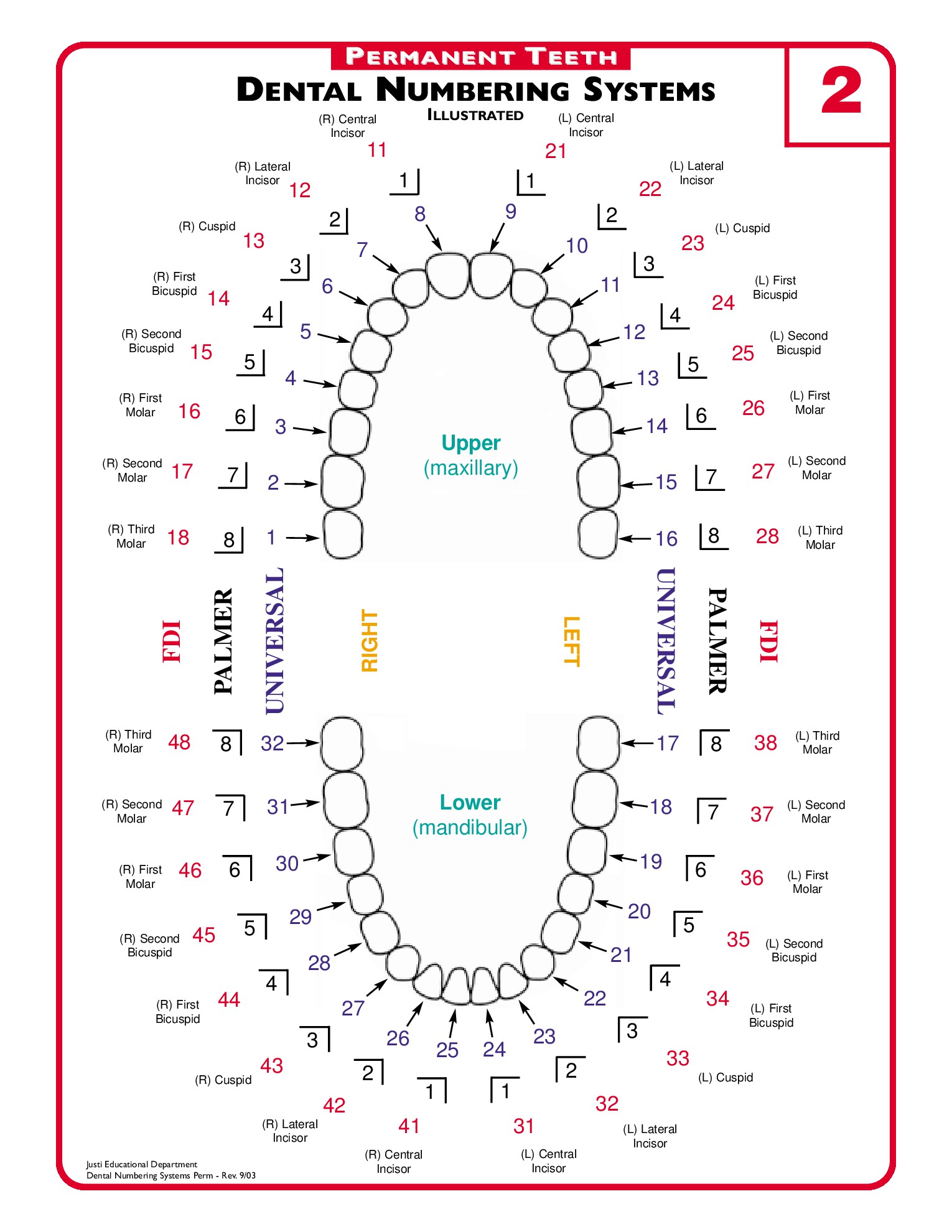THE DENTAL CHART
When your child visits a dentist for the first time, the dentist will begin charting their teeth. A periodontal chart, or simply dental chart, serves as an instrument for the pediatric dentist to note information and organize the data about the health of your kid’s gums and teeth as they grow. It is an effective tool to check problem areas and note on these chart.
Pediatric dentists also use charts to track growth and loss of baby teeth and eruption of permanent teeth.
The chart shows the period children start to lose their primary teeth between six and seven years old. Children start to complete their permanent teeth by 12 years old, when the third molars erupt in their late teens.
By comparing the charts from previous visits, the dentist knows whether your child’s teeth are developing normally, at the right developmental start and in the right location. Since teeth differ in shape, size and their location in the jaws, these differences influence your child’s ability to speak, smile and chew, as well as how your child’s teeth gives his appearances its unique shape and form.
How It Works
Dentists use the Universal Numbering System when recording your child’s teeth. In the US, the Universal Numbering System is the official system used by the American Dental Association (ADA). In this system, the first tooth is situated at the upper far right of the kid’s mouth, also called as the ‘third molar’. The counting continues from the front to the upper left side, to the 16th tooth.
Universal Numbering System used by general dentists today.
The 17TH tooth is the lower third molar on the left side. Counting continues from the front to the lower right side third molar. Since both upper and lower teeth names have the same names, the use of a number system saves you time and confusion when charting.
Difference of Primary Charts and Adult Charts
There is only one major difference between a baby’s chart and an adult chart, and that is the number of teeth. Children are born with 20 teeth, while adults develop 32 permanent teeth. So, keeping good records through a dental chart is a significant part of a pediatric dentist’s work.
Having regular dental check-ups will make sure your dentist can track your child’s development and identify any problems such as overcrowding before they turn to a complex issue. Try to study the dental charts so you will have a better understanding on how dentists use a dental chart and the numbering system you see won’t sound unfamiliar anymore.












